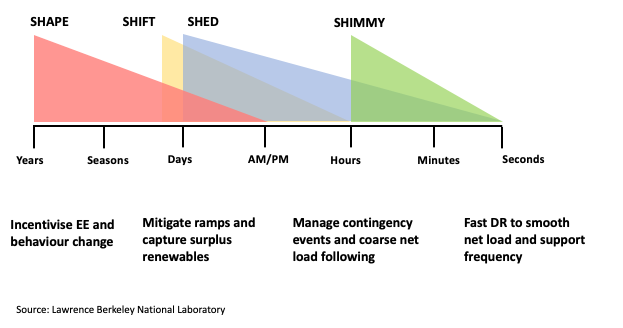Power systems are in the midst of profound transformation. More nations are striving to decarbonise their electricity grids and to electrify sectors previously powered primarily by fossil fuels such as heating and transport. To help weather this sea change, policymakers and power system operators have a rich resource at their disposal: consumers. They do not, however, always recognise the value of consumers’ willingness to be flexible in how they use electricity.
Consumers want to be part of the energy transition. They have rooftop solar, electric vehicles, heat pumps and the like. This can cause headaches for the network companies. The distribution networks, originally designed to only deliver electricity, have grown less predictable. Demand is growing with the trend to electrification, and system operators must accommodate power generated by consumers, despite a glaring lack of data on these resources. A typical residential consumer profile is a thing of the past.
To make matters more complicated, policymakers and system operators are not used to viewing customers as part of the solution. Given that consumers will foot the bill for the energy transition, it is important that policymakers and network companies motivate them to be a resource and value them as such.
Demand Response
More variable generation from wind and solar, coupled with greater demand driven mainly by electrification, is posing challenges for grid management. The default response from network companies is to build new infrastructure to cover peaks in demand—even if it is only needed to cover a few hours in a given year. The grid, however, is underutilised on average. In a world dominated by renewables, we need to use all available options to balance supply and demand at any moment and very rapidly. For that, we need more flexibility.
That is where consumers come in. In reality, they often have as much value for managing the grid as new poles and substations. Here are five reasons why. First, demand-side, or consumer, resources are flexible and reliable. Second, avoided investments in the power system are avoided costs for consumers. Demand-side flexibility is thus often cheaper.
Third, there is a price at which consumers are willing to change their consumption habits. This is called price-induced demand response. Fourth, technologies to aggregate this consumer flexibility — from data collection and analysis to appliance control technologies — are already low in cost. Finally, the flexibility potential of households increases with every new EV and heat pump.
Demand response does not stop at reducing the peaks in electricity demand. There are a variety of ways consumers can modify their demand to save money and allow the system as a whole to be more efficiently used. Sparing the reader the nitty-gritty of the details, the following graph illustrates how demand can be modified along different timescales.

To capture these values, we must ask ourselves how consumers can be mobilised. Well-designed, economically efficient network tariffs — the charges for the delivery of electricity to our homes and businesses — can induce customers to align their energy use with the needs of the grid.
Strategic tariff design
Experts and stakeholders argue about how network tariffs should be structured. At the heart of the debate are disagreements about what is fair, economically efficient and compensatory. As a practical matter, they boil down to whether consumption-based prices (per kilowatt-hour) or unvarying charges (often related to a consumer’s peak demand) are more efficient, equitable, and better suited to the energy transition.
Unfortunately, there has been a steady shift in Europe from consumption-based prices to largely fixed charges for network services. The usual arguments claim that network costs are driven primarily by individual consumers’ highest demands and therefore that capacity must be available to serve those demands. Plus, the network expenses do not really vary with changes in a consumer’s consumption of energy.
Both contentions, however, are flawed. Individual consumer peaks rarely coincide with system and local grid peaks; what matters is a consumer’s contribution to the relevant peaks. Prices that reveal the nature of costs, how they rise and fall as total demand rises and falls, reward consumers for usage at lower-cost times and improve the overall utilisation of the system. This applies not only to network but to retail tariffs as well.
Economic efficiency requires that prices be avoidable. Consumers should not have to pay for a service that they are not using. Fixed charges are, in this very basic sense, both economically inefficient and unfair. Tariffs based on when and how much electricity is used, on the other hand, are efficient and fair. They align grid use with grid availability and reveal just how much demand flexibility is out there, which is an important tool for integrating variable renewables into the system. And they will boost the case for energy efficiency.
Attractive consumer mobilisation
New ways of doing things usually seem risky. So why would distribution grid companies use cheap demand-side resources instead of investing into new grid capacity? The answer lies in regulation. If the network companies operated within a market, they would try hard to find the cheapest way to provide their services.
Being regulated entities, however, it falls to the regulator to mimic this market discipline and motivate grid companies to reduce costs and consumers’ bills. One powerful tool is a compensation regime that makes grid companies cost conscious when choosing between demand and supply solutions. They should be rewarded for choosing the cheapest and most valuable tools to meet the needs of consumers and the energy transition.
Complementary policies
Policymakers can help piece together the flexibility puzzle. It is important to educate consumers about the value and benefits of their flexibility and prove that exercising it is not inconvenient. For time-of-use tariffs to be successful, energy companies need to provide consumers with transparent information that is easy to understand.
The California Public Utilities Commission has ordered two customer guarantees as part of their time-of-use rate rollout: The utilities charge customers at the new rate and provide a shadow bill to show what they would have paid at their old rate. There is a one-year guarantee that credits the difference if the bill increased.
The value of flexibility rises with each new variable renewable unit, electric vehicle and heat pump connected to the grid. But consumers will only provide flexibility if they receive ample compensation for the value they create not only to grid operators but also to the power system. They are not simply consumers but agents of change.
A version of this article originally appeared in Foresight Climate & Energy.

